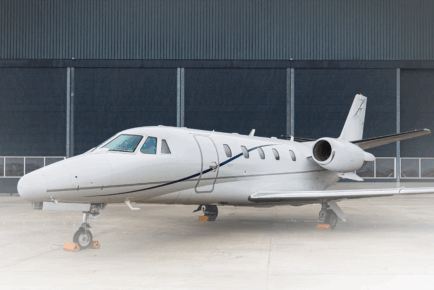Africa is a region where business aviation plays a unique and vital role. The sector bridges vast geographic distances, overcomes infrastructural gaps, and supports economic development in both established and emerging markets.
At Jetcraft, we continue to see consistent and growing regional demand. Driven by a combination of resource-led economies, expanding tourism, and new entrepreneurial wealth, Africa’s business aviation market is maturing with confidence and lasting momentum.
Tracking demand across Africa’s aviation hubs
Southern Africa continues to anchor the continent’s business aviation activity, with South Africa leading as an established and active market. In West Africa, Nigeria remains a core hub, joined by Ghana, where political and economic stability is helping unlock new opportunities.
Central Africa’s demand is shaped by activity in the Democratic Republic of Congo, where industrial growth is increasing the need for reliable aviation solutions. Meanwhile, East Africa is experiencing an uptick in tourism-related flying, with operators prioritizing aircraft designed to adapt and perform reliably across varied routes and terrain.
Throughout the continent, aircraft ownership is increasingly viewed as a strategic enabler, offering a reliable solution to regional complexity and evolving market needs.
Why long-range capability is driving large jet demand
Africa’s size and infrastructure mean long-haul capability is not a luxury; it’s a necessity. We’re seeing strong demand for large, wide-cabin aircraft capable of connecting African cities to international hubs such as Dubai. For many clients, reaching Dubai sets the benchmark for their next aircraft purchase, with both range and performance key areas of consideration.
At the same time, the market for smaller aircraft remains active. Turboprops are in high demand, particularly in tourism sectors where the ability to land on shorter, remote runways is crucial. While there’s less crossover between aircraft types than in other markets, we often see high-net-worth individuals (HWNIs) operating both, using a turboprop for leisure and a jet as a business tool.
How global supply is shaping Africa’s aircraft inventory
As interest in business aviation continues to rise, Africa’s aircraft supply remains largely international. Most wide-cabin jets entering the continent are sourced from outside markets, typically Europe, North America or Asia, where availability, choice and transaction volume remain higher.
For smaller aircraft, regional transactions are more common and often more straightforward. When an aircraft is already based in Africa, deals can move faster, reducing complexity for both parties.
Thanks to improved regulation and international maintenance standards, perceptions of African-based aircraft are changing, with buyer confidence growing, particularly for jets serviced in Europe or registered abroad.
Africa’s next generation of aircraft owners
A shift in buyer profile is reshaping the African business aviation landscape. Alongside established corporates and family offices, emerging entrepreneurs are entering the market, building businesses across the energy, construction and telecommunications sectors. These owners see aircraft as business tools that ensure they can navigate complex logistics and fragmented infrastructure.
In countries where commercial options are limited or unreliable, business aviation enables control, speed and operational freedom. The right aircraft offers a competitive edge, so new owners can operate with agility and confidence across borders.
At Jetcraft, our global reach, on-the-ground insight and proven track record across Africa give clients the certainty to move forward – wherever business takes them.
SIGN UP FOR OUR MONTHLY JETSTREAM RECAP
Don't miss future Jetstream articles. Sign up for our Jetcraft News mailing list to receive a monthly eblast with links to our latest articles. Click to join the 1,800+ subscribers on our mailing list.






